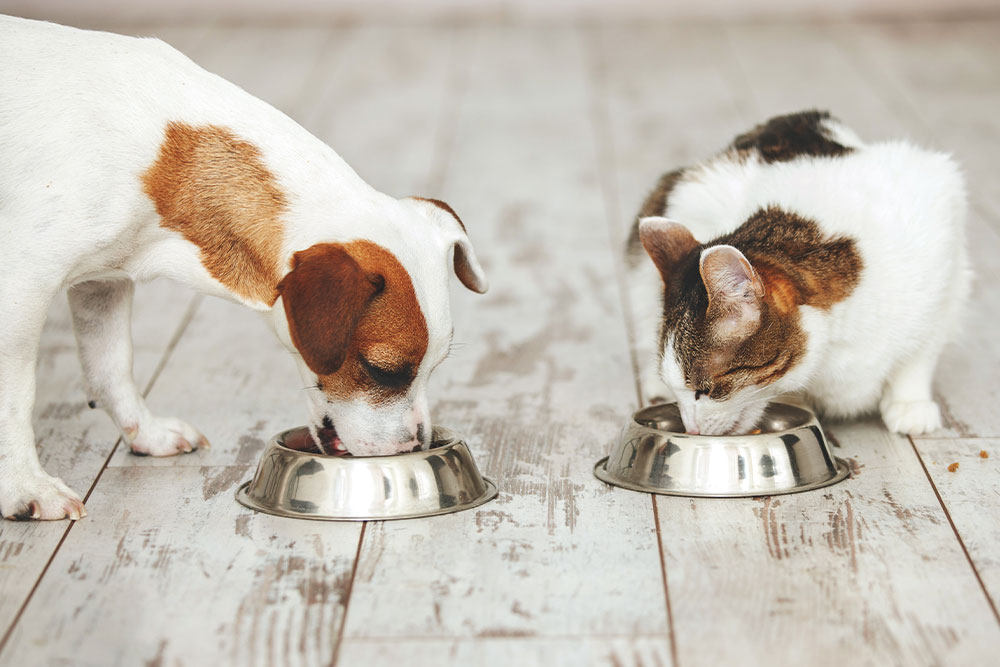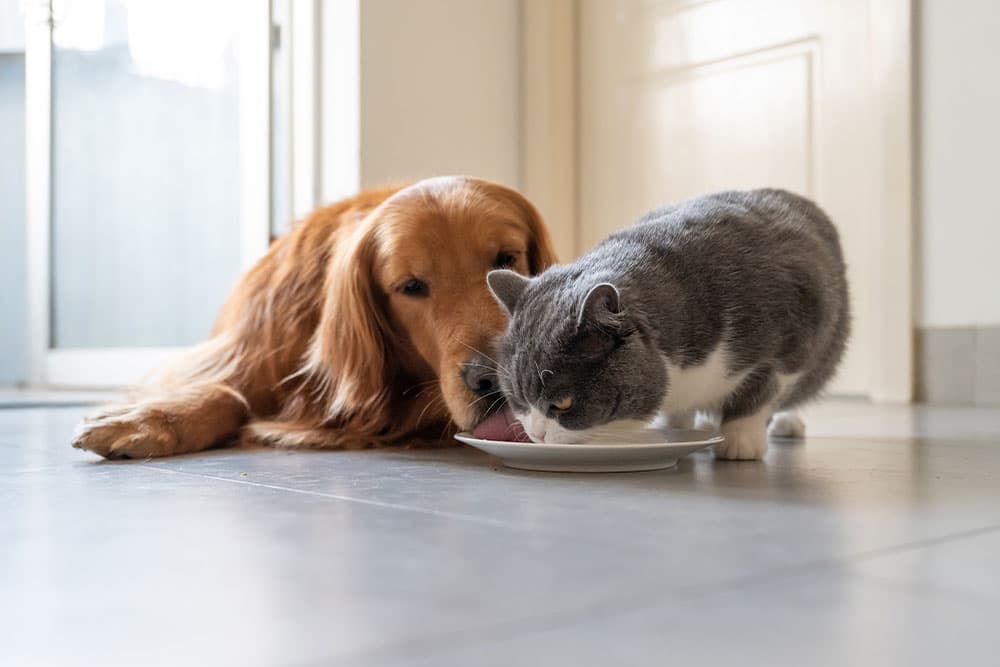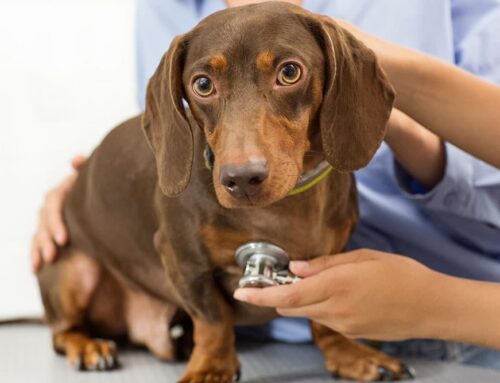Nutrition Matters: Helping Your Pet Thrive Through Smarter Feeding
Paws at Play Resort and Daycare – North Royalton, OH
If you have ever stood in the pet food aisle, phone in hand, scanning ingredients like you are decoding a mystery novel – you are not alone. At Paws at Play Resort and Daycare, we see it all the time. Pet parents want to do the right thing, but nutrition trends and online advice can be downright confusing. Between raw diets, “grain-free” labels, and by-product myths, choosing what to put in your pet’s bowl is not always simple. Feeding your pet isn’t just a daily routine—it’s a daily opportunity to support their health.
What Does “Species-Appropriate Diet” Really Mean?
A species-appropriate diet means giving your pet food that matches their natural needs – not just whatever sounds trendy.
For dogs, that often looks like:
- Moderate animal-based proteins
- Healthy fats
- Digestible carbohydrates
- Balanced vitamins and minerals
Cats are different. They are obligate carnivores. Their diet should be:
- High in protein
- Low in carbohydrates
- Moisture-rich, to mimic the prey they would eat in the wild
When you feed pets this way, you help support digestion, healthy skin and coat, a strong immune system, and a healthy weight.
Common Nutrition Myths: What to Ignore
With so much information online, it helps to separate fact from fiction. Here are a few myths worth busting:
- Raw is better: Not necessarily. While raw or freeze-dried raw can be healthy if handled correctly, it carries bacterial risks for pets and people. Check out FDA guidance and Cornell’s research before you switch.
- Cats can be vegan: Cats need certain nutrients that only animal proteins provide. A vegan cat is an unwell cat.
- Grain-free is always healthier: Not true for every pet. Grain-free foods sometimes swap grains for legumes, which may affect heart health in dogs. Learn more from Ohio State University Veterinary Medical Center.
- By-products are bad: Many by-products are nutrient-rich organ meats. Focus on the quality of ingredients and sourcing, not just labels.
Want more myth-busting? The Pet Food Institute has great resources.
Reading Labels: Where to Start
Pet food labels are full of buzzwords, but these basics help:
Check for:
- An AAFCO statement: Confirms the food meets minimum nutritional standards.
- A clear guaranteed analysis: Protein, fat, fiber, moisture.
- Feeding guidelines: Use them as a starting point, then adjust.
When in doubt, use a pet calorie calculator to double-check serving sizes. And remember – our team and the vets at North Royalton Animal Hospital can help you read between the lines.
Comparing Common Pet Food Types
No single diet works for every pet. Here is a quick look at what you might consider:
| Food Type | Pros | Cons |
| Kibble | Budget-friendly, convenient | Less moisture, can vary in quality |
| Wet/Canned | Higher moisture, tastier | Costlier, spoils faster |
| Raw/Freeze-Dried | High protein, minimally processed | Requires careful handling |
| Fresh/Home Cooked | Customizable, digestible | Time-consuming, must be balanced properly |
| Vegan/Vegetarian | Can help dogs with allergies | Not suitable for cats, needs vet supervision |
If you are unsure which makes sense, talk with our team during your next visit or boarding drop-off at our Canine Resort or Feline Resort.
How You Feed: More Than Just the Bowl
How you feed your pet can be just as important as what you feed.
A few strategies to try:
- Scheduled feeding: Helps with portion control and training.
- Free feeding: Works for some pets, but can lead to weight gain in most.
- Puzzle toys and slow feeders: Add mental stimulation and slow down eating.
- Kibble as treats: Great for training – just subtract those calories.
Our doggie daycare uses slow feeders and puzzle toys every day to keep pets engaged.
Treats and Table Scraps: Where to Draw the Line
Treats are important for bonding and training, but too many can cause problems fast. Keep treats under ten percent of daily calories.
Better treats:
- Freeze-dried meat
- Plain boiled chicken
- Carrot sticks or green beans
Never give pets:
- Grapes or raisins
- Chocolate
- Onions and garlic
- High-fat scraps
A poor diet does not just lead to extra pounds – it can trigger obesity, arthritis, diabetes, skin issues, or chronic discomfort. If your pet struggles with itchy skin or frequent ear infections, diet could be part of the cause. The good news? A well-balanced diet is one of the simplest ways to prevent expensive health issues down the road.

Switching Foods: Do It the Right Way
Switching foods too fast can cause stomach problems. Try this 10-day transition plan:
- Days 1–3: 75 percent old food, 25 percent new food
- Days 4–6: 50/50 split
- Days 7–9: 25 percent old food, 75 percent new food
- Day 10: 100 percent new food
For more guidance, check out Purina’s food changing guide.
Let’s Build a Better Feeding Routine Together
Feeding your pet well is one of the best gifts you can give them – and you do not have to guess alone. When your pet joins us for daycare, grooming, or a stay at our Canine Resort, we help support good nutrition habits every step of the way. If you want help picking the right food, understanding labels, or just making mealtime more fun, our team and partners at North Royalton Animal Hospital are ready to help.








Leave A Comment